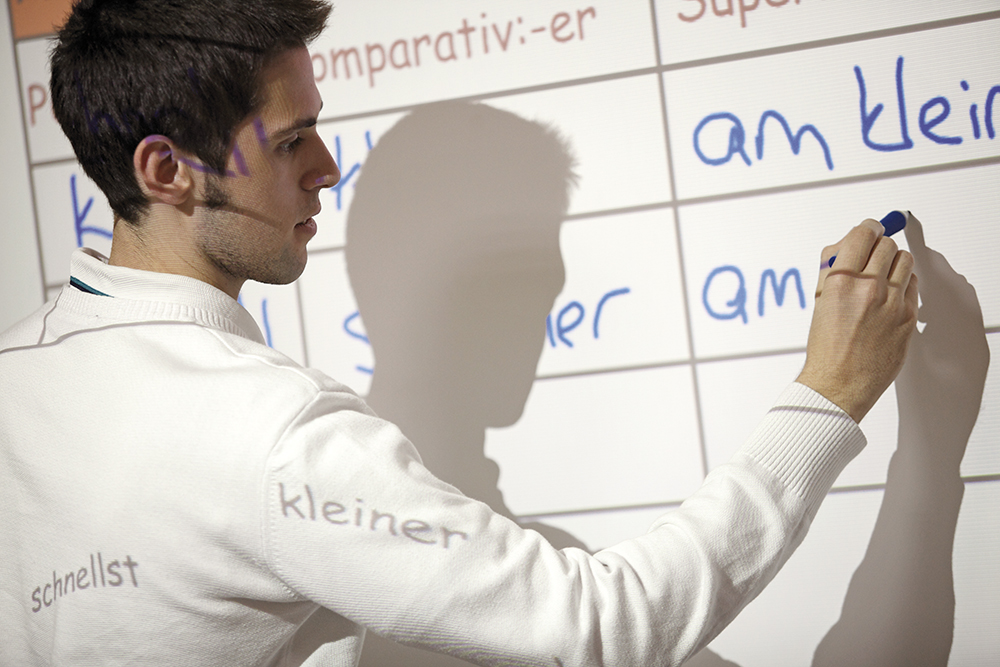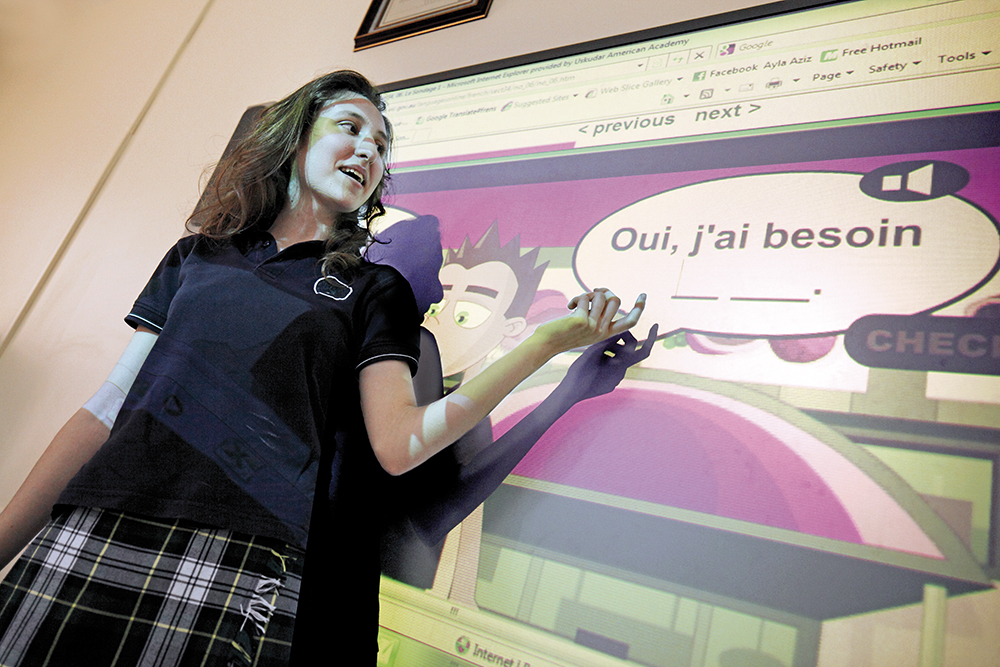Educational Vision
At Üsküdar American Academy, the second foreign language program not only equips students with language skills but also offers them the opportunity to explore the cultural values, lifestyles, and thought processes associated with the language. This approach helps students become conscious and sensitive individuals in the multicultural world of the 21st century.
Our second foreign language program aims to enable students to gain a global perspective and enhance their intercultural understanding and awareness. Throughout this process, students are encouraged to develop a positive attitude towards learning a new language, viewing the language learning journey not only as an academic goal but also as part of their personal development.
The program is structured to provide an effective learning environment within the limited class hours. Through German, French, and Spanish lessons in Grade 10, students experience an interactive, student-centered language learning experience, structured from A1 to A2+/B1 levels according to the Common European Framework of Reference.
Key Areas
The program follows a gradual skill development model:
In Prep class, the goal is for students to reach the A1 level. At this level, students can understand simple expressions, write short messages and emails, recognize familiar phrases in brochures, ads, or posters, and engage in basic communication.
In Grade 9, the instruction continues towards A1+/A2 levels. Students can understand frequently used expressions related to everyday topics such as school life, shopping, and geography, catch the main idea in short messages, write personal letters, and describe their own living conditions.
In Grade 10, the aim is to reach A2/A2+ level. Students develop their speaking, listening comprehension, and reading skills. They can participate in simple conversations, follow short narratives, and express their needs in familiar situations.
 Student Journey
Student Journey
Real-life scenario-based communication:
Students develop their language skills by role-playing realistic communication situations connected to everyday life in class. For instance, through scenarios like ordering in a restaurant, asking for directions, or introducing themselves, students make their learning tangible and applicable.
Project-based learning and presentations:
Students design and present projects that allow them to showcase their creativity in the target language. Creating digital posters, filming short videos, and engaging in role-playing activities support original thinking skills and lead to lasting learning outcomes.
Digital tools and AI applications in language teaching:
In lessons, interactive digital games such as Quizlet, Word Wall, and Kahoot, as well as apps related to course materials, help students expand their vocabulary. Students also learn how to access information in the target language through reliable web sources. AI-powered applications that personalize language learning provide students with individual feedback.
Extracurricular activities and club work:
Advanced-level students participate in discussions on various topics in the German Club, developing critical thinking and discussion skills in the target language. These activities also foster increased interaction and motivation for language learning among students.
Internationally Recognized Proficiency Assessment
We encourage our students to participate in internationally recognized language exams (Goethe-Zertifikat, DELF, TELC, DELE,etc.) aligned with the Common European Framework of Reference (CEFR). These exams provide students with the opportunity to track their language proficiency in a concrete way.